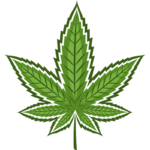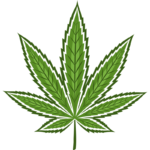The Plant
Cannabis is a vertical flowering plant with three subtypes: indica, sativa, and ruderalis. These subtypes are based on the origins of the plant and the characteristics the plants share.
Generally, the terms indica and sativa are used to characterize the effects of these varieties. This existing nomenclature that sativa delivers a stimulating high and indica a sedating high is inaccurate.
Research indicates that the effects are closely related to the levels of THC, CBD, and terpenes, namely myrcene, the plant contains, and less so due to the type of plant itself. Cannabis industry professionals and dispensaries continue to use these groupings.
Hybrid flower results from breeding sativa and indica plants together and comprises most of what is available in the legal marketplace.

Indica
Indicas mature early and are dense plants with short, dark green and thick leaves that sometimes have a purple hue. Indicas originated in the Hindu Kush mountain range.

Sativa
Sativas tend to be taller, lighter green,and less dense with thinner leaves. They have a longer growing season and originated in equatorial areas.

Ruderalis
Ruderalis is a small, wild variety of cannabis that is auto-flowering. Its starts flowering after germination and continues to grow. Ruderalis originated in Northern Russia. It contains very low levels of the cannabinoid CBD.

Hemp
Hemp is cannabis, even though they are not regulated together. Cannabis plants grown for seed and hemp fiber are often referred to as “industrial hemp” or “hemp.” Cannabis plants grown for their flowers and therapeutic compounds are often referred to as “marijuana,” or “cannabis.”
In the U.S., the legal delineation is the plant’s percentage of THC.
- If a plant has less than 0.3% THC, it is considered “hemp.”
- If a plant has more than 0.3% THC, it is considered “marijuana” or “cannabis.”
Cannabis Anatomy
Fan leaves
The large five-fingered fan leaf collects sunlight and converts it into energy through photosynthesis. The fan leaf is the symbol commonly associated with cannabis.
Cola
The “cola” or “tail” is a dense stalk of flowers at the top of the plant.
Stigma
In female plants, stigma are tiny strands in the pistil, an area that grows from the calyx. They collect pollen from male plants.
Node
The location where a leaf joins the stem.
Bract/Calyx
The leaves that surround the flower/bud.
Trichomes
Primarily located in the plant’s flowers, trichomes are resinous glands with high concentrations of cannabinoids, flavonoids, and terpenes. They are often used to make concentrates and extracts.

